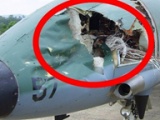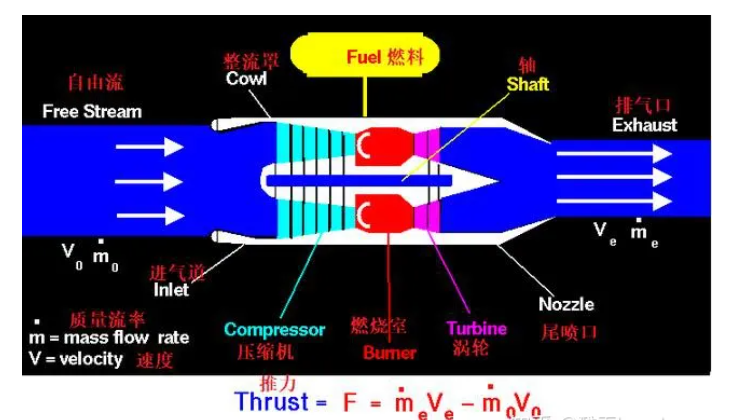Colin JeffreyNovember 26, 2014Bio-Electric-Hybrid-Aircraft concept aims to quietly rule the skies
The Faradair BEHA concept is intended to be one of the world’s quietest, most efficient and environmentally friendly aircraft ever created (Image: Faradair)
Image Gallery (15 images)
Touted as the world's first true hybrid aircraft, the Faradair BEHA (Bio-Electric-Hybrid-Aircraft) is a triple box-wing design concept that combines electric motors and a bio-diesel engine. Fitted with a range of energy conservation and recovery technologies, including solar panels on all flight surfaces and high-lift, low-speed flight capabilities, the BEHA is intended to be one of the world’s most environmentally friendly aircraft.
Aimed at the traditional multi-role light aircraft market, the BEHA concept is premised for a range of operations with lower cost overheads and minimal environmental effect. Included in a potential list of users are those who are engaged in inter-city travel, operate flight schools, run observation and emergency services, or simply want a low running cost aircraft for recreational use.
To this end, the designers of the BEHA claim that their concept electric design offers true "hybrid" dual-fuel capability with a combined bio-diesel/electric propulsion combination that will put it into a different league from currently available electric aircraft, by no longer requiring ground-based recharging. As such, it is intended that the Faradair craft also employ such energy recovery technologies as all flight surfaces being skinned with solar panels, along with wind-turbine technology to allow battery-charging for the vehicle whilst it is in-flight or on the ground.
The plan is to equip the BEHA concept with twin electric fan motors (from the company's renderings, somewhat similar in appearance to those used on the recently flown Airbus E-Fan electric aircraft) that deliver some 200 hp (150 kW) each, in combination with a similarly powerful bio-diesel generator incorporating a ducted pusher propeller. Designed to take off and land using electric power, the bio-diesel engine is intended to recharge the batteries whilst the craft is cruising to increase the overall performance and flying time.
"Markets will be opened up as this lightweight, state-of-the-art, carbon fiber, high-lift designed aircraft will negate night flight restrictions and pollution concerns," says Neil Cloughley, Managing Director of Faradair Aerospace Limited. "Its truly radical and futuristic design aims to follow in the footsteps of other great aviation achievements by becoming a game changing aircraft that helps transform aviation as we know it today."
The inspiration for the BEHA was the de Havilland Dragon Rapide, an iconic British design from the 1930s. With a large surface area from its three lift surfaces, combined with an efficiency-enhancing box wing design that reduces turbulent airflow, the makers of the BEHA also hope to emulate the popularity and success of their design's inspiration as a comfortable, smooth flying model of light commercial transport.
A range of active and passive safety features are promised, including a ballistic parachute recovery system, high-impact capability crash protection (apparently modeled on Formula One motor racing technology), the ability to run on fewer than its full complement of engines, and a high-efficiency glide capability that allows longer unpowered flight in the unlikely event that all engines fail.
And – perhaps most interesting of all – the ultimate safety feature: If anything should happen to the pilot and he is unable to fly the plane, Faradair also plan to outfit the BEHA with a remote control system so that the aircraft can be flown and landed by a pilot in control from the ground. Despite the fact that no such system has yet had approval on any aircraft, the designers believe that being able to remotely control the craft in times of emergency would boost passenger confidence and safety immensely.
"This aircraft will be one of the most eco-friendly and safest aircraft in the world, costing somewhere close to $1m US Dollars per aircraft," says Cloughley. "Plus our production facility will be equally environmentally focused."
Recently launched on Kickstarter, the company intends to spend the next 12 months through 2015 on Research and Development, with a specific aim to complete specifications and fabrication of prototype parts, provided its £20,000 Kickstarter aspirations are met.
The video below shows the company's Kickstarter pitch and some animations of the concept.
Source: Faradair
生物電子混合動力飛機要安靜地統(tǒng)治天空 bio電動混合動力飛機的概念旨在靜靜地統(tǒng)治skies的faradair行為概念是一個世界上最安靜,最有效和最環(huán)保的飛機曾經創(chuàng)造了(圖片:faradair)
圖像畫廊(15張)
吹捧為世界上第一個真正的混合動力飛機的faradair行為(生物電混合動力飛機)是一個三重箱翼的設計理念,結合電動馬達和一個生物柴油發(fā)動機。裝有一系列節(jié)能和回收技術,其中包括所有的飛行表面和高揚程的太陽能電池板,低速飛行能力的行為,是一個世界上最環(huán)保的飛機。
瞄準在傳統(tǒng)的多用途輕型飛機市場的行為概念的前提是一系列以較低的成本費用和最小的環(huán)境影響的操作。包括了潛在用戶名單是那些從事城市間旅行,操作飛行學校,運行觀察和急救服務,或只是想要一個低運行成本的飛機娛樂使用。
為此,聲稱他們的行為概念的電氣設計提供了真正的“混合”雙燃料的能力相結合的生物柴油/電力推進的組合,將把它變成一個不同的聯(lián)賽,從現(xiàn)有的電動飛機設計師,不再需要地面充電。因此,它的目的是,faradair工藝也采用這種能量回收技術為所有飛行的表面皮膚的太陽能電池板,隨著風力發(fā)電技術讓電池為汽車充電雖然是空中或地面上。
計劃是使行為概念與雙電風扇電機(從公司的效果圖,在外觀上使用的空客E-Fan電動飛機飛行的最近有些相似),提供200馬力(150千瓦),結合一個同樣強大的生物柴油發(fā)電機將導管推螺旋槳。設計起飛和使用電力的土地,生物柴油是用來充電的小艇巡航以提高整體性能和飛行時間。
“市場開放將為這個輕量級的,國家的最先進的,碳纖維、高揚程設計的飛機將否定的夜間飛行限制和污染的擔憂,說:”尼爾克拉雷,faradair航空有限公司的總經理。”它真正的激進和前衛(wèi)的設計旨在跟隨其他偉大的航空成就的腳步,成為一個改變游戲規(guī)則的飛機,可以將航空作為我們今天所知道的。”
靈感的行為是德哈維蘭迅龍,一個從世紀30年代標志性的英國設計。與表面大從三升的表面面積,結合提高效率的盒式機翼設計減少紊流,該行為的制定者也希望模仿的普及,他們的設計靈感的成功作為一個舒適、輕型商用運輸平穩(wěn)飛行模型。
一系列的主動和被動安全功能的承諾,包括彈道降落傘回收系統(tǒng),高抗沖擊能力的碰撞保護(顯然是仿照F1賽車的技術),運行在低于其完整的發(fā)動機的能力,和一個高效率的滑翔能力,所有引擎失敗的不可能事件再無動力飛行允許。
和–也許最有趣的是–終極安全功能:如果飛行員不能駕駛飛機,faradair還計劃裝備的性能與遠程控制系統(tǒng)使飛機可以從地面飛行和著陸的駕駛員。盡管事實上沒有這樣的系統(tǒng)尚未有任何飛機驗收,設計師認為,能夠遠程控制時的急救工藝將提高旅客的信心和安全無比。
“這架飛機將成為世界上最環(huán)保、最安全的飛機,成本的地方接近100萬美元美元的飛機,說:”克拉雷。”再加上我們的生產設施將同樣環(huán)保。”
最近推出在Kickstarter上,公司擬在未來12個月內通過2015個研究和發(fā)展,與特定目的的完整規(guī)格和原型零件加工,提供£20000 Kickstarter的愿望得到滿足。
下面的視頻顯示了該公司的Kickstarter的音調和一些動畫的概念。
-
混合動力
+關注
關注
8文章
312瀏覽量
35080 -
生物電
+關注
關注
0文章
4瀏覽量
6255
發(fā)布評論請先 登錄
相關推薦
Pamcrash在飛機鳥撞分析中的應用

我國首款四座電動飛機獲頒型號合格證 續(xù)航可達1.5小時
CBM24AD99Q | 重塑生物電勢測量,開啟精準醫(yī)療新時代

芯佰微電子CBM24AD99Q模數(shù)轉換器(ADC) 助力生物電勢測量技術

飛機庫維修電源的重要性
Heart Aerospace推出首款30座混合動力電動飛機全尺寸演示機
基于 FPGA 的飛機大戰(zhàn)游戲系統(tǒng)設計
基于Simcenter的新一代飛機設計

Lilium簽署合作伙伴關系,將其獨特的eVTOL噴氣式飛機帶到亞洲,從菲律賓開始
顛覆傳統(tǒng)制造:PLC物聯(lián)網(wǎng)如何徹底改變工廠設備數(shù)據(jù)采集的游戲規(guī)則?





 生物電子混合動力飛機面世 欲成為一個改變游戲規(guī)則的飛機
生物電子混合動力飛機面世 欲成為一個改變游戲規(guī)則的飛機












評論